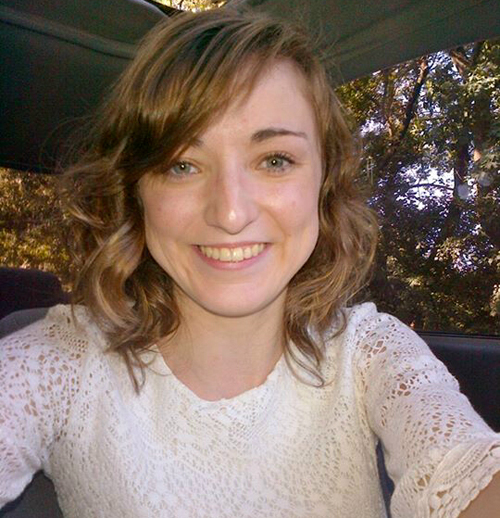
Most people don’t think about their breathing. But for anyone living with cystic fibrosis (CF), every breath can be a challenge. The disorder is caused by a gene mutation that affects the viscosity of fluids produced by the body’s epithelial cells, including those found in the lungs.
One in 2,500 people is born with the disease, which fills the lungs with thick mucus. That provides a haven for bacteria that cause chronic pulmonary infections and inflammation. The disease causes scarring, lung damage and loss of function. Treatment involves taking multiple drugs and undergoing daily therapy to help clear the lungs. In the latter stages of the disease, patients often require a lung transplant to survive.
Tara Bourque, a bachelor of arts and sciences student, received a double-lung transplant in February 2012 after a lifelong struggle with CF. The 20-year-old from Sarnia, Ont., started her first year at U of G in fall 2011 but was forced to take time off a month later after day-to-day activities became too strenuous. It took her 30 minutes to cross the street from her residence in Macdonald Hall to Creelman Hall. “It was physically exhausting for me to do so,” says Bourque.
Her parents knew something was wrong when she was a baby. She had difficulty gaining weight, got sick more often than most infants and coughed up mucus. At 14 months, she was diagnosed with CF. Her first serious lung infection happened in Grade 2, when she was hospitalized for pneumonia.
Aside from occasional infections, she led a relatively normal childhood. But as her condition progressed, she had to take multiple drugs daily, including inhaling vaporized medications for up to an hour.
In high school, Bourque’s hospital stays became more frequent and lengthy as she battled serious lung infections. The day after her prom, she was admitted to Sick Kids in Toronto for a one-month stay, during which she attended her classes via Skype.
She was on oxygen constantly, and her veins began to collapse because they had been punctured with needles so many times. Breathing became so difficult that her body burned 3,300 calories a day. She needed to consume at least 4,000 calories a day to maintain her weight, but she often felt too sick to eat.
Daily activities became impossible. Her sister washed her hair for her in a sink because showering drained Tara’s energy, and her boyfriend carried her up and down the stairs at home.

At 18, Bourque was told she needed a double-lung transplant to see her next birthday. By then, her treatment took six hours a day, and she was constantly hooked up to an IV and an oxygen tank. She was down to 78 pounds and 16-per-cent lung function, which made her eligible for the transplant list.
The wait could have taken weeks or months. But 11 days later, Toronto General Hospital called. A pair of lungs had become available. They turned out to be a perfect match for her.
As she lay smiling and excited in her hospital bed, family members asked whether she wasn’t afraid of the 10-hour transplant surgery. “This is the only thing that’s going to fix me,” she replied.
A day later, she started walking around the hospital. “As soon as they pulled out the ventilation tube, I realized what a difference that my surgery made. I could breathe in more and more and more.”
Bourque still had a long road ahead to recovery. The incision crossed her chest from armpit to armpit and required 52 staples to close. Recovering from a broken sternum was the most painful part of her ordeal, but it took her less time to recover from the surgery than from previous lung infections.
She will have to take anti-rejection drugs every day for the rest of her life. When she wakes up in the morning now, she thinks she has to do CF treatment until she remembers that she has new lungs. “It’s just fun to breathe,” she says.
Bourque has become an advocate of organ donation. “My donor is my hero.” She encourages people to sign organ donation cards and register online.
U of G research could help CF patients breathe a little easier.
Cezar Khursigara, a professor in the Department of Molecular and Cellular Biology, is looking at ways to improve antibiotic treatment of lung infections caused by Pseudomonas aeruginosa. The bacteria form biofilm communities that protect against the body’s immune system and antibiotics, making infection difficult to treat.
“Biofilms are inherently difficult to get rid of,” he says. “The body’s natural ability to clear mucus is inhibited.” The bacteria are found in low levels – and are easily treated – in children with CF but cause severe lung infections in people in their 20s after bacterial populations grow.
Khursigara’s lab is studying antimicrobial properties of silver, which has been used for thousands of years to kill bacteria. Adding silver nanoparticles to CF antibiotics has been shown to improve the drugs’ efficacy. “We hope that we will not see the same level of resistance as with antibiotics alone,” he says.
He has received research funding from Cystic Fibrosis Canada.